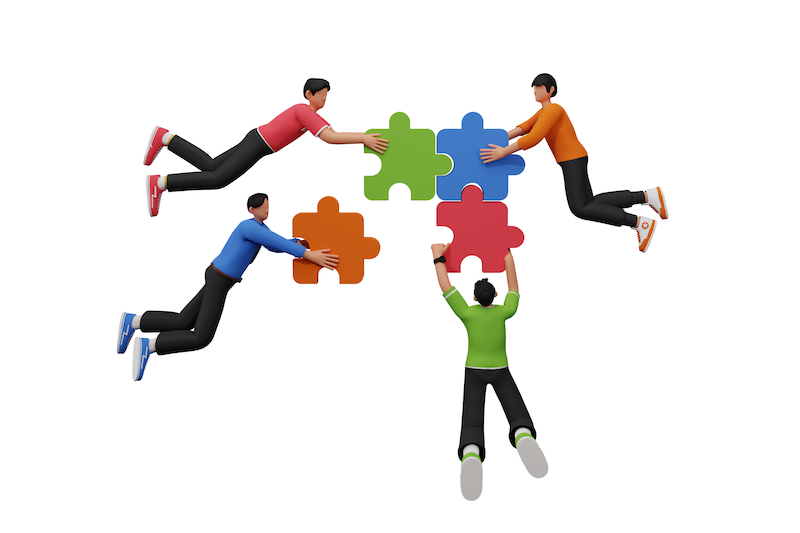
Types of Synesthesia: Examples And Key Benefits
Table of Contents
Synesthesia is a condition relating to the anatomy and functions of the nervous system. A unique sensory experience that emerges in response to the stimuli collected by our sense organs is the most concise description of what is synesthesia. When our brain processes any type of stimulus, such as a thing or event that evokes a specific functional reaction of one of our senses, other senses can also be launched.
Brain researchers are still trying to get to the bottom of this phenomenon and detect why it may crop up. Learning why senses in some individuals might be blended or hooked up most unexpectedly with each other can help to understand more deeply how our natural perception is set. It also allows getting closer to how our brain is arranged. For most, synesthesia examples can cause perplexity while others experience it every day with the inability to get rid of it or make it less intensive. Meanwhile, neuroscientists, cognitive psychologists, and artists are keenly interested in how the data we receive from different senses are combined, the mechanism of such a condition, and whether it can be trained. It was proven that people with mixed senses have a higher level of creativity and can easily build impressive associations. So let’s take a quick look at this engrossing neurological condition and its types.
What Is Synesthesia?
Synesthesia means that when our brain processes any type of stimulus, such as a thing or event that evokes a specific functional reaction of one of our senses, other senses can also be launched. Thus, hearing some musical notes, we can see them in color. The same situation can be with letters or numbers. That is the emergence of human sensation not only in the sensory organ, which must react to the stimulus but also in another sense organ which usually is not activated with the specific type of sensory input.
The normal perception is when your tongue detects taste, and your nose feels smell, or your ears experience sounds. Synesthesia perception is when names are associated with tastes, visualizing music, you connect it with some shades of the violet or caramel smells green to you. Perhaps you have met such people. If not, you know Beyoncé, Billie Eilish, or Nikola Tesla. All of them have single or mixed types of synesthesia. Early, such quirks of the human mind were not taken seriously or even considered signs or symptoms of some mental decline. However, such over-phantasy and blended senses were a sign of higher IQ and impressive imagination skills needed for artistic or inventive work.
There is no single pattern of thought creation and thinking processes to describe the cognitive functions of synesthetes. As in practice, the response to the signals of one sensory or cognitive system in another entails the individual perception of information and process of symbols, data, objects, etc., in a specific or even inimitable way. Of course, sometimes, the behavior of synesthetes can coincide. No one can predict the reactions, as they are complemented by other sensations and ideas: smell, taste, color, shape, volume, and a sense of location in space. These extra sensations are not the result of sensory experiences. They usually come associatively. Therefore, after conducting several tests, it became clear that the synesthetic type of thinking, which converts words into images, assists in better reproduction of new materials, efficient memorization, non-standard thinking, and open-mindedness.

Types Of Synesthesia: How To Understand If Your Thinking Is Synesthetic
The causes of the extraordinary ability to activate several senses with one stimulus and its physical mechanism are still not fully understood. Mainly due to the difficulties in defining the concept itself: an unambiguous basis for mixing feelings has not yet been found, but there are several common theories. At the same time, synesthesia is equally intriguing and secretive, and its occurrence and activation are hidden not only from scientists who study the brain but from the individual who possesses such an ability itself. Dissimilar to visualization, overactive imagination, hyperphantasia, when our mind reflects our gained experiences or things we’ve learned, it is an internally induced process with a diversified range of symptoms. It can include, for example, spontaneous and extraordinary perception. To figure out if you have some of the types of synesthesia, it is recommended to explore some of them and discover which feelings an individual can go through.
Grapheme Color Type of Synesthesia
This type is the most common, and it evokes a sense of color provoked by reading symbols. Let’s take a look at letters and numbers. Thus, the number 4 itself can bring to the conscious mind one color, while the word four will produce a completely different color in our imagination. Synesthetes are usually better at encoding long strings of information, e.g., phone numbers, some kind of ciphers, or hard-to-grasp concepts and terminology. Such individuals have in their perception a unique picture. At the same time, having this synesthesia type, some mathematical skills can be weak, as seeing the same colors with different figures can complicate calculation tasks. It is believed that the brain itself sets these rules, and decisions about connections are made unconsciously. It is impossible to explain why one word is blue, and other words can stimulate different colors. But it can be said that this mental phenomenon stems from the interlinked interaction between several modules in the brain that are responsible for one or another sense. And these cross-communications in mind entail a mixed perception of data.
Sound-To-Color Perception
If your mind can see sounds, music, songs, or particular noises in color, you have chromesthesia. The exciting fact is that sometimes people think it is normal to experience pink or have any other visual reaction to a particular sound. However, this brain ability is quite rare, and such people are amazed when unleashing the truth.
OLP Personification
With the ordinal-linguistic type of personification, we can use the features that we usually attribute to people to associate them with any kind of information, for example, seasons of the year or numbers.
Mirror Touch
It is about feeling and reflecting others’ feelings or physical sensations or even repeating movements with no conscious control. This pattern of behavior proves that humans possess neurons that mirror other individuals’ activities. It is one of the rarest types of synesthesia; however, we have experienced it to some extent. Thus, we started to cross the street at a red light just because the pedestrian in front of us did so. Such behavior is most common on the autism spectrum. Sometimes patients with Asperger’s Syndrome involuntary reflect other people’s movements or can feel their emotions.
Auditory-Tactile Synesthesia
The physical sensations you feel at the moment when chalk is scratching a blackboard have their name. Thus, if your skin also begins to itch, you are a synesthete. It is more than just abstract thinking or our imagination, as the real feelings, such as a desire to scratch, are triggered.
Misophonia
If you are irritated or annoyed due to some specific sound, it means you have misophonia. Usually, negative emotion is provoked by a range of sounds, e.g., when someone is champing. It can be quite dangerous, as sometimes, the levels of emotional anxiety can drastically grow if the sound is constant.
Other Interesting Manifestations
It seems that such a capacity of the human brain is limitless because there are several more mysterious responses to stimuli. For example, with the spatial sequence type, you can have the ability to see a sequence in the form of points located in a certain way in space. With lexico-gastric perception, a person might even associate a taste with a word.

Testing For Synesthesia
It is possible that there are some conditions associated with synthesized senses that are not yet described. Moreover, sometimes, an individual can live without even not knowing of such a phenomenon. Since perception, our memory, and mixed senses are highly correlated, you can use memoryOS technology and memory palace creation to understand if your senses are working separately or together. Also, to understand if you have it, evaluate the range of extra feelings and whether you have some excessive emotions triggered by one impulse that must be processed only by one sense and brain module. These sensations usually occur involuntarily, and you can’t control them. Only people themselves can detect if they have the condition by analyzing tactile, taste, or sound sensations.
FAQ
Is synesthesia a mental illness?
The condition is rather rare — up to four percent of the population. It is not classified as a mental, memory, or brain disorder, but refers to perceptual features or neurological phenomena. At the same time, some people with synesthesia report extremely intense sensations that can create too much tension, especially emotional ones, and cause poor concentration.
What Color is 7 synesthesia?
One of the tests to activate and check synesthetic processing encompasses asking people which color they see if looking at seven written in black. Those individuals who were diagnosed with a grapheme-color type state that, as soon as they think about this particular number and its shape, they experience yellow, red, or violet, even if its external color is black.
How many types of synesthesia are there?
New types with multiple diversified signs continue to be uncovered to this day. But still, they can be grouped into ten key directions.